18th June 2008 : Wild Goose Chase
 Friday, June 20, 2008 at 08:45PM
Friday, June 20, 2008 at 08:45PM Not long before we went to Nairobi (on the 31st May, to be exact) I was happily photographing the female Egyptian Goose taking a wash in one of the pools by the river’s edge, when the male goose suddenly approached her, making a real racket and looking like he was up to something. Without the slightest provocation, he reached over and bit the female on the neck. Hang on! I thought, what’s going on here? The next minute, he was on top of her, and they were mating. What a rough mating ritual indeed! I’ll let the sequence of photos speak for itself. It amused me how, once the job was done, the male puffed himself up and was so obviously pleased with himself. And the female? Well, she just returned calmly to her bathing…
(Any of the images below can be enlarged - just click on the thumbnail...)
I was lucky to be in the right place at the right time to witness this, for the geese had been courting for a while, the male hovering around the female at all times, making a lot of noise and flapping his wings, as if trying to impress her. (She didn’t strike me as being all that impressed, mind you.)
Since they mated, the female goose has been disappearing for long stretches at a time, leaving the male alone to graze on the new grass growing so green and lush on the sandbank….so it is safe to assume she is on the nest – but where? The day I saw the geese mating, I went up to the dam (weir) on the small Mtito River at the top of our property, where the two old hammerkop nests are (which the geese and the hammerkops have both been using on and off for years. Do you remember me talking about them last November (when I obviously did not have time to post photos...) Well, several things have changed since my last visit to the site: one of the old doum palms has fallen down, taking the older hammerkop nest with it. The newer hammerkop nest looks in ship-shape condition – in fact, the nest hole has been widened which suggests it is being prepared for use…perhaps by the geese? I must go up there again as soon as I can to see if the goose is sitting…if she’s not there, well then, I know not where she is! (In this description, I am assuming that the female goose is the one sitting – for in reality, both sexes look the same, but judging by the behaviour of the one left behind on the river, I think he’s the male.)
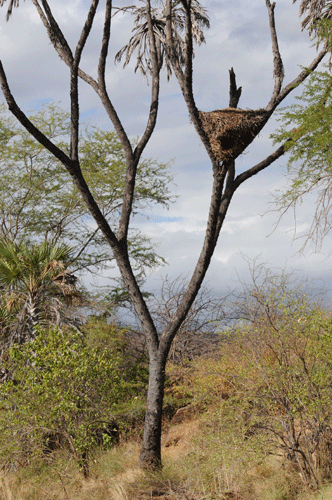
Spare some pity for the tiny goslings, whose first task in life will be to leap from the nest (above), which is more than twenty feet off the ground, and land on a dry barren riverbed (the Mtito River is dry at this time of year), before walking a full kilometre on their tiny legs to the Athi River where they will thankfully find water and food. Fortunately for the goslings, nature designed them to bounce so – somehow – they survive this leap into the unknown, which is just the very first of many perils they will have to face before they reach adulthood. Despite the best efforts of their aggressive parents, the tiny goslings are much in demand from eagles and any other small predator which would make an easy mouthful of them…
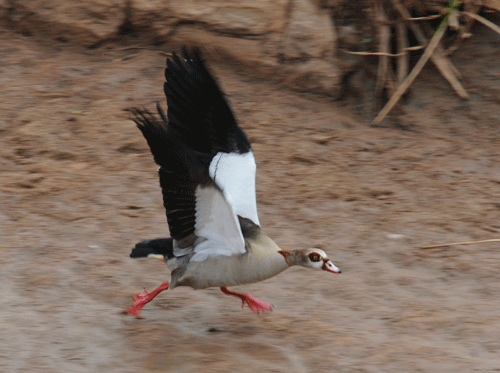
Talking of aggression, the male goose has become aggression personified since he mated. Any other goose that appears within or even near his territory (which seems to be a stretch of river about 800-1000 yards long, to the left and right of our house) gets treated to a ferocious chase and merciless assault if caught.
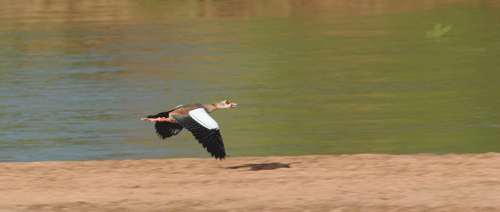
The other day I watched as “our” male goose chased down a pair of geese that had appeared further downstream. Somehow he caught up with them (they had taken off the minute they saw him take off, but somehow he found the speed to catch them even though they had 200 yards head start) and launched himself at the other male, sending him crashing headlong into the river. This in turn startled a big crocodile who was dozing at the river’s edge, sending him crashing into the river too…you certainly can’t accuse the lone male goose of not taking care of his own!
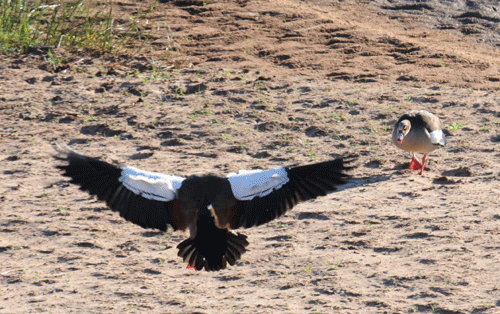
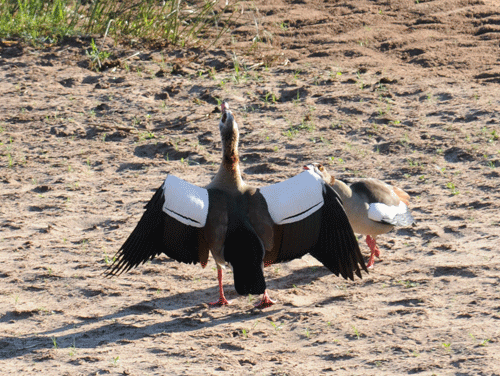
Whenever the female rejoins the male on the river bank (normally late evening and early morning), it’s always a dramatic affair with lots of quacking and flapping of wings and posturing. In fact, in the early morning, I see the two geese flying from the direction of the old hammerkop nest, over the top of our house and back to the Athi River, so I wonder whether the male roosts alongside the female in the nest?





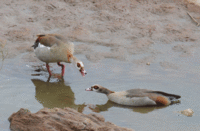
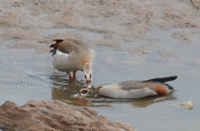
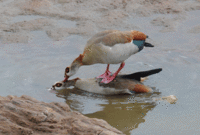
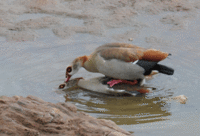
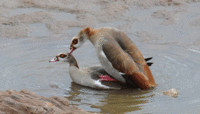
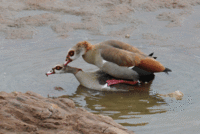
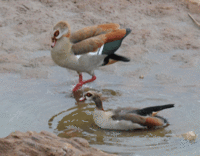
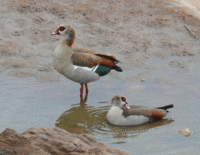
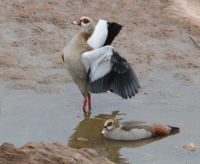
Reader Comments